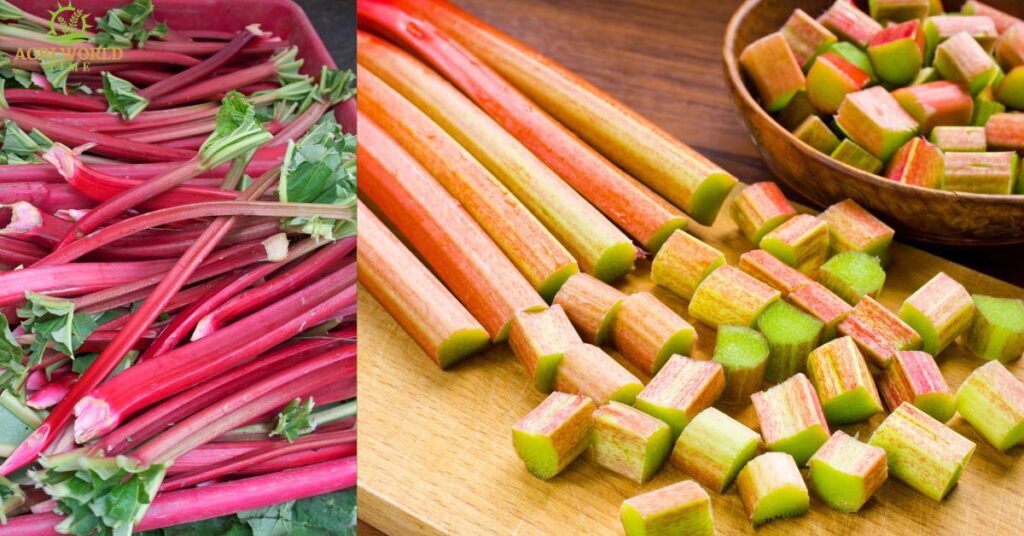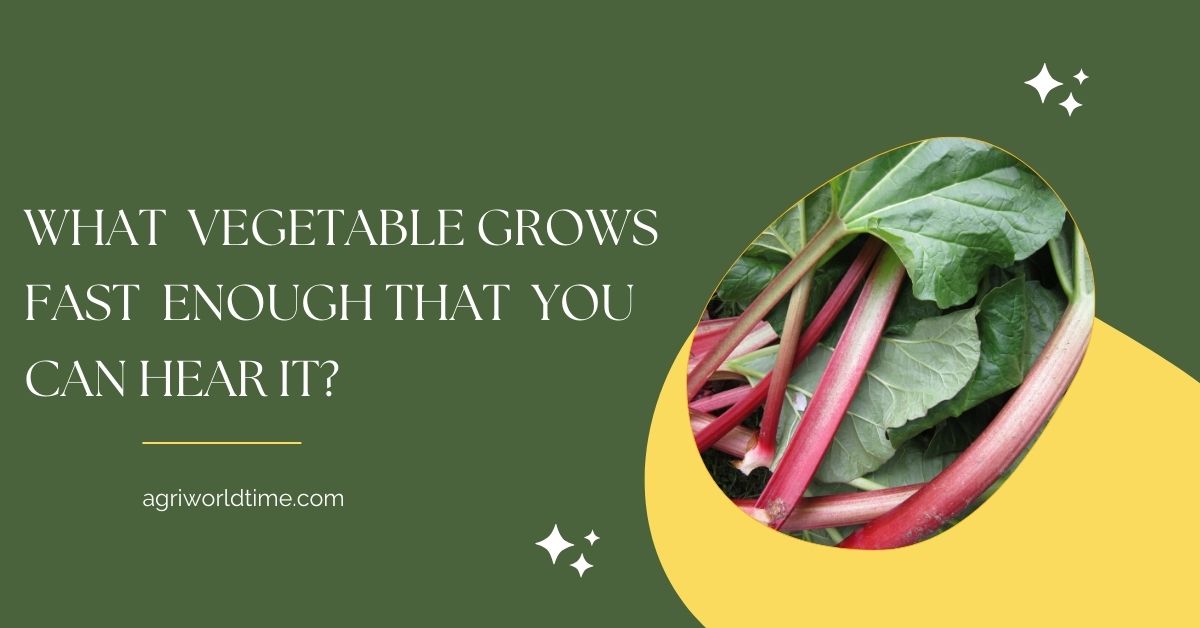In the world of gardening and agriculture, there are plenty of remarkable tales about the resilience and rapid growth of various plants. But have you ever heard of a vegetable that grows so fast you can actually hear it? It might sound like something out of a science fiction novel, but it’s a reality regarding rhubarb. This intriguing phenomenon is known as “forced rhubarb,” it’s been captivating gardeners and scientists alike for centuries. In this blog, we’ll dive into the fascinating world of rhubarb, exploring its history, growth process, and the curious noises it makes when cultivated in near darkness.
The History of Forced Rhubarb
The practice of forcing rhubarb is far from a recent discovery. In fact, it has a history that dates back to the early 1800s in the “Rhubarb Triangle” of West Yorkshire, England—a region encompassing approximately 9 square miles and situated between the charming towns of Wakefield, Morley, and Rothwell. Farmers in this distinctive corner of the world pioneered the technique of cultivating rhubarb in dark sheds, seizing the opportunity presented by the market demand for early-season rhubarb—a delicacy highly coveted in Victorian-era Britain.

The Unique Appeal of Rhubarb
Rhubarb is often mistaken for a fruit due to its frequent use in pies and desserts. It is a vegetable with a distinctive tart flavor. Its vibrant red stalks and large green leaves have made it a favorite among gardeners and culinary enthusiasts. But what sets rhubarb apart from other vegetables is its ability to grow astonishingly fast, a characteristic that becomes even more intriguing when we consider the auditory aspect.
Forced Rhubarb: A Journey into Darkness
The phenomenon of “forced rhubarb” involves a unique cultivation method that encourages the vegetable to grow at an accelerated pace. This process hinges on the manipulation of light exposure during specific stages of rhubarb growth.
Traditionally, rhubarb plants are grown outdoors and exposed to natural sunlight. However, the magic happens when these plants are subjected to a deliberate period of darkness. To achieve this, farmers transfer the mature rhubarb plants, which have spent around two years basking in the sun, into dark sheds in the early winter months. Inside these dimly lit environments, the rhubarb continues to grow throughout the season, seemingly unaffected by the absence of light.
The Growth Spurt Heard ‘Round the World
Now, here’s where things get genuinely remarkable. As forced rhubarb enters the dark phase of its growth cycle, it undergoes a rapid transformation. The stalks, which are typically slender and pale, begin to stretch and thicken at an astonishing rate. In some cases, forced rhubarb can grow by as much as an inch per day! This incredible growth rate is what produces the audible noises that have captured the attention of farmers and researchers for generations.
The sounds emitted by rhubarb during this growth phase are often described as a symphony of squeaks, cracks, and pops. Imagine standing in an almost pitch-black room surrounded by rows of budding rhubarb, and suddenly, you’re serenaded by a chorus of plant-based percussion. It’s an eerie and captivating experience.
The Science Behind the Sounds
While the sounds of growing rhubarb might seem otherworldly, they can be explained by the plant’s rapid growth in near darkness. The cracking and popping noises are primarily caused by the stretching and splitting of the plant’s cells as they expand quickly. As new cells form and old ones elongate, the stress and tension within the stalks result in audible signals.
This phenomenon isn’t unique to rhubarb, as other plants can produce sounds during growth as well. However, rhubarb’s ability to do so at such a rapid pace and under controlled conditions makes it a truly exceptional case study in the world of botany.
Conclusion
The fascinating world of rhubarb offers a glimpse into the extraordinary capabilities of the plant kingdom. Rhubarb, a seemingly unassuming vegetable, surprises us with its remarkable ability to grow rapidly and produce audible sounds during the process. The phenomenon of forced rhubarb is a testament to human ingenuity in harnessing nature’s secrets for our benefit.
So, the next time you enjoy a slice of rhubarb pie or savor the tartness of rhubarb in your dishes, remember the hidden symphony of growth that occurs in the dark sheds of the Rhubarb Triangle and other regions where this intriguing vegetable thrives. Rhubarb, a true marvel of the garden, teaches us that there is always more to discover and appreciate in the world of plants.
FAQs
What is rhubarb, and why is it unique in terms of growth speed?
Rhubarb is a vegetable known for its tart flavor, often used in pies and desserts. It stands out due to its remarkable ability to grow rapidly, especially when cultivated using the “forced rhubarb” technique.
How does forced rhubarb cultivation work, and why is it done?
Forced rhubarb cultivation involves transferring mature rhubarb plants into dark sheds after two years of outdoor growth. The absence of light in these sheds triggers accelerated growth, making rhubarb stalks elongate rapidly. This process is done to obtain early-season rhubarb, which is highly sought after for its tender, pink stalks.
What kind of sounds does rhubarb produce during forced growth?
Forced rhubarb emits a symphony of sounds, including squeaks, cracks, and pops. These noises result from the rapid expansion and splitting of plant cells as the stalks grow quickly in near darkness.
Are there other vegetables or plants that grow exceptionally fast?
Yes, several vegetables and plants are known for their rapid growth. Some examples include bamboo, sunflowers, radishes, and watercress. These plants can often grow inches or even feet in a short period.
What are the benefits of cultivating fast-growing vegetables?
Fast-growing vegetables offer several advantages. They can provide an early harvest, allowing gardeners and farmers to enjoy fresh produce sooner. Additionally, quick-growing plants may outcompete weeds and require less maintenance.
Can I try forced rhubarb cultivation at home, or is it best left to experts?
While forced rhubarb cultivation is traditionally done on a larger scale, it’s possible to experiment with this technique in a home garden. However, it requires careful control of light and temperature conditions so it may be a bit challenging for beginners.
Are there any specific tips for growing rhubarb, whether forced or traditionally?
For successful rhubarb cultivation, choose a sunny location with well-drained soil. Plant rhubarb crowns in early spring or late autumn and avoid harvesting in the first year to allow the plant to establish itself. Regularly fertilize and water your rhubarb to ensure healthy growth.
What are some delicious recipes that feature rhubarb as a key ingredient?
Rhubarb is a versatile ingredient that can be used in a variety of dishes. Some popular recipes include rhubarb pie, rhubarb crisp, rhubarb jam, and rhubarb compote. It can also be used in savory.

